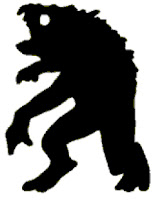 by Richard A. Lupoff
by Richard A. Lupofforiginally published Shadows Over Baker Street, 2002
Holmes and Watson are visited byLady Fairclough, whose husband has disappeared and whose brother has married a sinister foreign woman. Their marriage ceremony was off, too, being presided over by a mysterious priestess who made a bizarre hand gesture that Lady F. cannot even replicate. This vague info is enough to tip off Holmes, who leads them all to the Lady's family home, known as the Anthracite Palace.
There, her new sister-in-law unabashedly invites them all to take part in a ceremony sponsored by her religion, the Wisdom Temple of the Dark Heavens. Everyone agrees.
Holmes fills Watson in on his secret library of occult tomes, which skips the usual titles but does contain the complete works of Arthur Machen(!). And he explains his certainty that the mysterious hand gestures is surely the "Voorish Sign", a magical pass of great power and evil.
Ceremony time! Holmes and Watson sabotage the attempt to summon some extra-dimensional horror, and dynamite the castle, escaping in time with Lady Fairclough and her brother.
An amusing enough tale, but pretty minor stuff. Interestingly, Lupoff portrays Watson ala Nigel Bruce's interpretation, as a bumbling boob, rather than the more traditional Doyle-esque Watsons.

























